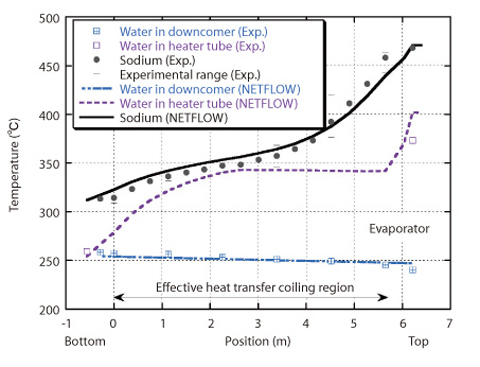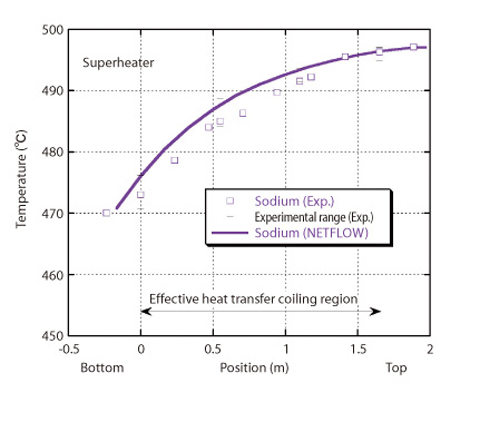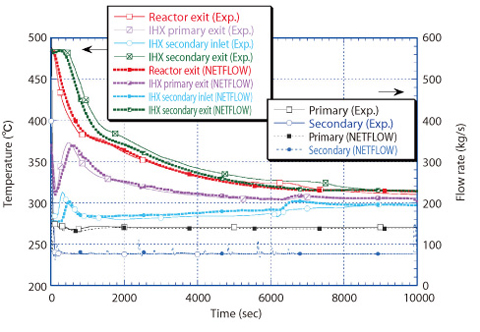

Fig.1-35 Temperature distribution in the 50MW steam generator

Fig.1-36 Turbine trip test of "MONJU" at 45% thermal power
The NETFLOW code was developed in order to simulate complex flow systems like an auxiliary cooling system of a nuclear power plant. Good applicability of the code was confirmed through validation using data obtained from experimental facilities regarding pump, heat exchanger, piping, flow control valve and so on, and plant data obtained at a nuclear power plant.
In order to increase the versatility of the code, modifications make it applicable to a liquid metal cooled reactor have also been conducted, and validation analyses have been done using data obtained at sodium facilities. The data at the 50 MW steam generator (SG) facility and the fast breeder reactor (FBR) "MONJU" are introduced here. Since the SG of an FBR has different configuration and characteristics than that of an LWR, SG validation was necessary, as this is an important component. When a model of SG was incorporated into the code and applied, the calculated temperature distributions in the evaporator and super-heater of the 50MW SG agreed well with actual values. Plant transients were calculated for the loops of the 1/3 Monju model: the core, primary coolant system, secondary coolant system, and SG/third coolant system. The calculated events were a natural circulation test of the secondary loop for 24 hours under primary pump heating, and a turbine trip test at 45% thermal output. In the natural circulation test, heat removed by a finned tube air cooler in the secondary system was evaluated under forced and natural circulation conditions. Applicability of the code to a sodium flow system is confirmed by the fact that the code reproduced the test results.
Fast running of the code was realized in the calculation. In flow system modeling of one of three loops in operating state, a plant transient lasting 1000 seconds was calculated within 1 second using a personal computer (PC) with a 2GHz clock. Therefore, plant transient for a couple of days can be analyzed simply, e.g., the natural circulation test of the second system for 24 hours was calculated within two minutes.
At present, there are plans for this code can calculate flow systems for light water, heavy water, and various liquid metals, to be used for research and education in graduate schools in order to improve the skills of nuclear engineers. Furthermore, this code can be applied to chemical plants etc., adjusting the physical properties of the liquid used.